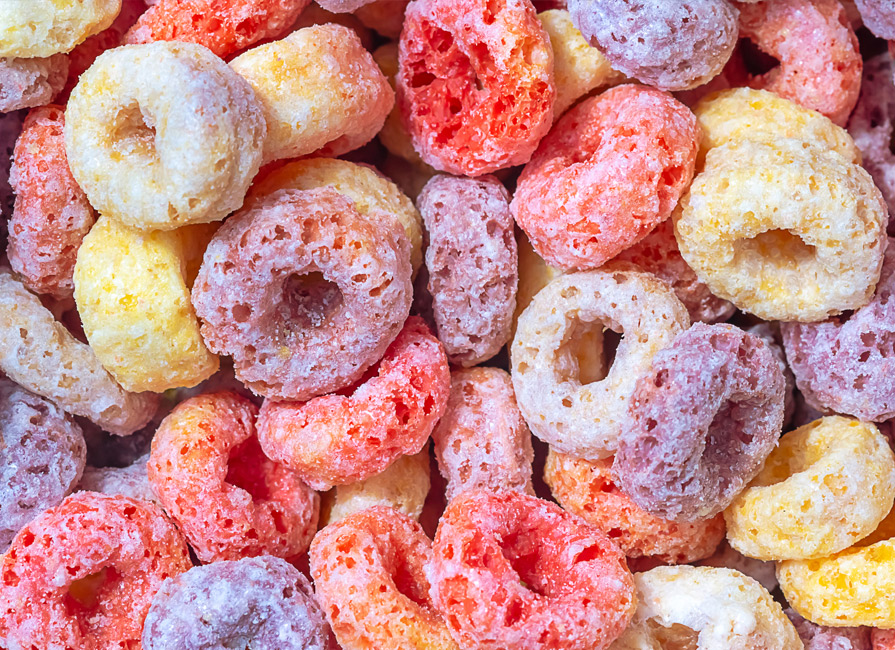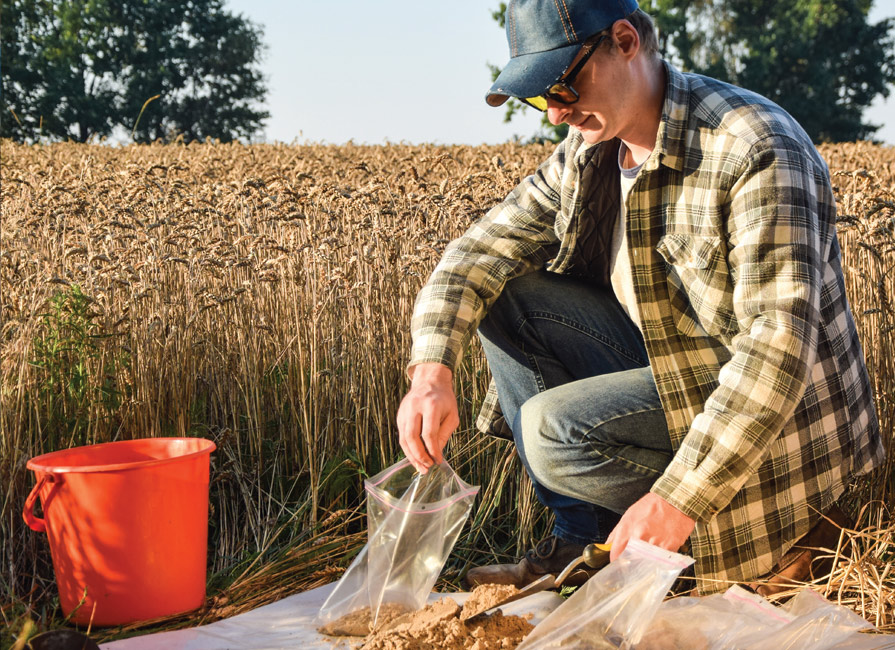Market research shows that today’s consumers are increasingly interested in knowing where their food comes…

Just What Are We Eating?
Eating is a tough subject these days. Choices abound. Marketing is manipulative.
When it comes to buying food, advice is wildly conflicting. Feeling better does not necessarily result from the advice one reads and some suggestions can be unsustainable (keto much?). The ironic result is that quality of life stays low. There is a growing awareness of the connection between food quality, how it is produced, the environment, animal welfare, climate change, and politics. This awareness is clear in the growing demand for verified sustainable foods (like those certified by A Greener World), as consumers seek help in the marketplace to minimize harm from choices. This fact remains: the simple act of buying food today can be a very stressful business!
Feeling bad
In this article I am going to talk about food—particularly animal foods—in relation to our individual well-being. While we eat for many reasons, one of the toughest and most common issues with food is that it makes us feel ‘bad’. This can be the result of feeling guilty: typically, the ‘I-shouldn’t-have-eaten-that’ kind of thinking, or ‘that-food-is-good, that-food-is-bad’ kind of thoughts. Sometimes it is more physical: heartburn or bloating, or a skin breakout or joint pain or brain fog. Sometimes food ends up being a person’s only antidote/reward for the offenses of modern life; a placating tool that tries to make up for loneliness or loss or trauma, but perversely perpetuates a cycle of poor-quality eating. Often, in our search for health, people end up living in households where everyone is eating differently, which can drive a wedge between friends and families. A theme that arrives related to food is that there are upsides and downsides to each of our choices. However, if we start to put human health at the center, clarity begins to emerge.
A focus on health
I am a physician in Nashville, Tennessee, where I do integrative medicine. What that means is that, like most people, I have come to acknowledge that Western medicine is but one tool in the box used in the pursuit of well-being. Modalities like mindfulness, yoga, supplements, biofeedback and nutrition are now commonplace, and actually have quite a bit of ‘Western’ literature to back them up.
Unfortunately, most patients are usually told to take medicines and are expected to be ‘compliant’ with the program—even when side effects are terrible, or the medicine is not working. These issues occur because there is not enough time built into a medical appointment to fully explore a patient’s needs or the provider is not trained in the basics or the provider is too burned out to care.
Why do people feel so bad? There are lots of areas to consider. Toxins, stress, genetics, difficult relationships, trauma, the microbiome and the possibility of infections are good places to start. However, what we eat influences all of these factors in some way. So, in terms of personal empowerment, improving our diet is arguably one of the easiest and fastest ways to feeling better.
A focus on diet
What is it about diet that can make people feel so bad? How is it that foods that were perfectly acceptable 20–30 years ago suddenly are not ‘good’ for us? Probably the most remarkable and important aspects of food production related to human health over the last few decades are the contamination by farming chemicals of food and the extraordinary prevalence of modern food processing techniques.
These industrial practices have arrived far more recently than most people might realize. The first genetically modified (GM) crops eaten on a large scale by people were not grown until the mid-90s. Today, around 90% of corn, soy, sugar production and alfalfa are GM, typically to tolerate pesticide applications. Glyphosate is also widely applied to non-GM crops as a desiccant just before harvest to dry the crop out. This is considered a good business practice, one that increases crop yields per acre and profits. Unfortunately, evidence is clear that glyphosate is not good for human, environmental or animal health. Also unfortunate are the lengths that industry goes to obscure this fact. As the advocate for human health here, I just have to call it what it is.
Food processing comes in many forms, such as milling, cooking, drying, making smoothies. But it is industrial processing where health problems arise. Processing has some upsides in terms of product shelf-life, something that protects the Consumer Price Index and reduces the fluctuations in the price of food in times of drought, flooding and other effects of climate change. But the downside is that many processing technologies and food additives are simply designed to benefit the manufacturer’s bottom line, and thus result in ‘food’ that is far from ideal when it comes to human health.
Furthermore, what the food industry can now do is make cheap, low quality, low nutrition commodity ingredients look, smell and taste incredible—or ‘craveable,’ to use industry-speak. This perverse form of manipulation is especially tough for kids and people who have ever struggled with their weight. The intentional design of making ‘junk’ foods irresistible is something that, as a doctor and a parent, I utterly abhor.
Food as harm, food as healing
Plant and animal foods provide us with things called ‘essential nutrients’. Essential basically means that we are unable to manufacture the nutrient in our own body, so we have to get it from the diet. Essential nutrients include certain vitamins, minerals, and (one of my favorite subjects) essential fatty acids.
Essential fatty acids are well known among the health conscious these days. There are two categories of essential fatty acids, omega-3 and omega-6, named by the location of a particular type of carbon-to-carbon bond found in these long fatty chains. Omega-3s function in an anti- inflammatory role and omega-6s are a pro-inflammatory source. These fats are the building blocks for all cell membranes (as in every single one of your roughly 30 trillion cells) and are essential for the body to function correctly. Together they are like the gas and the brakes on our system of healing, which we have to do all the time. An optimal diet contains about 2–4 parts omega-6 for every one part of omega-3, but the typical modern American diet is somewhere between 10–30 parts omega-6 for each omega-3. This is speculated to be one of the reasons why inflammatory diseases are far more prevalent today than in the past.
We can get these essential nutrients from both plants and animals. However, plant sources of omega 3 (the anti-inflammatory fat) need to be converted in our gut before they become the ‘high-dollar’ versions found in animal sources, most famously oily fish like salmon. However, this conversion process is really inefficient, so that only about 5% of the plant form called alpha-linolenic acid (ALA)—found in kale, spinach, soybeans, walnuts and many seeds—becomes docosahexaenoic acid (DHA) and eicosapentaenoic acid (EPA). We need the plant-version of omega-3 fats in our diets, but there literally are not enough fish in the sea to supply our animal sources. While grassfed beef and dairy doesn’t pack quite the punch of the cold-water fish, eating it offers two advantages: a reduction in omega-6 fats and an increase in omega-3 fats.
One area of research that I would like to see more of is the potential health impact of eating meat and dairy from farms that practice the type of sustainable livestock husbandry that promotes positive animal welfare and environmental health, as promoted by A Greener World’s farm standards.
Ultra-processed foods
I am a big fan of eating plants, but not in the way that replaces meat and dairy products with ultra-processed ‘plant-based’ alternatives.
What healthy plant-centric eating means to me is that you have replaced the highly processed foods in your larder with whole plants, fruits, grains and pulses, and that you use meats as condiments. By eating a mostly unprocessed diet, the nutrient density of foods is higher. As I mentioned before, there is a lot that we need to get from our diet that we cannot make on our own. Those things are not found in highly processed foods; if they are, such as in fortified foods, it is not necessarily in a form or amount that is good for the body.
Eating unprocessed plants and animals is not particularly ‘craveable’ and that is a good thing. I do not mean to say that eating this way will mean that you will no longer enjoy eating. But what you may find is that you are not susceptible to the “crunch all you want, we’ll make more” urges that highly processed foods make you feel. The trade-off is that you may go to bed with fewer thoughts of having done something you should not have, and wake up feeling more alert, positive and energetic.
Turning the tide
Most of the time at work, when I hand out advice like a white-coated Ann Landers, I tell patients that I am also listening with intent to my own words. After all, we are all imperfect, navigating the choice-overload of life as best we can.
But what could help turn the tide for our individual health and well-being—and for the health of the planet—is that, whenever possible, we choose the things that interconnect to raise us all up. If we do, the food and farming system will shift towards increasing the availability of the kind of foods and diets that truly restore us and the world we share.
The ‘Nocebo’
One of my favorite tools is the placebo: to invite (with intention) a harmless option that a person uses to ritualize an investment in the self. We know that many Western medical interventions are effective because of placebo—and in my practice that is not a negative! It is a tool to be leveraged, with that ‘all-hands-on-deck, whatever works’ attitude.
But the placebo has a negative counterpart: the ‘nocebo.’ This noxious placebo can have a profoundly negative effect on health. When one does something, or perhaps is prescribed a treatment that they do not believe in, the lingering thoughts that this is a bad idea clearly increase the likelihood of a bad outcome.
Let’s apply this nocebo thinking to the idea of Concentrated Animal Feeding Operation (CAFO) meats. As a working mother of three, I am a big fan of convenience. But unfortunately, convenience is one of the greatest threats to human health out there. Processed foods are no doubt convenient, but the trade-off is poor health (not to mention animal welfare and the environment). The convenience of a rotisserie chicken or take-out barbecue (did I mention that I am from Memphis?) has its appeal, but I have integrated the supply chain limitations into my purchase, no longer capable of forgetting the CAFO or the ‘big ag’ processor threats that contribute to my nocebo-feeling about the product. In the same way that I now make sure that I do not have time not to meditate (others may feel similarly about exercise or socializing), over the years I have become more committed to the idea that I do not have time not to stop and cook a good meal if I want to feel well.
Author: Dr Amy Price-Neff is a physician practicing medicine at Mindstream Integrative Medicine in Nashville, Tennessee, and serves on the AGW Board of Directors.
Originally published in the Summer 2022 issue of AGW’s Sustainable Farming magazine.



